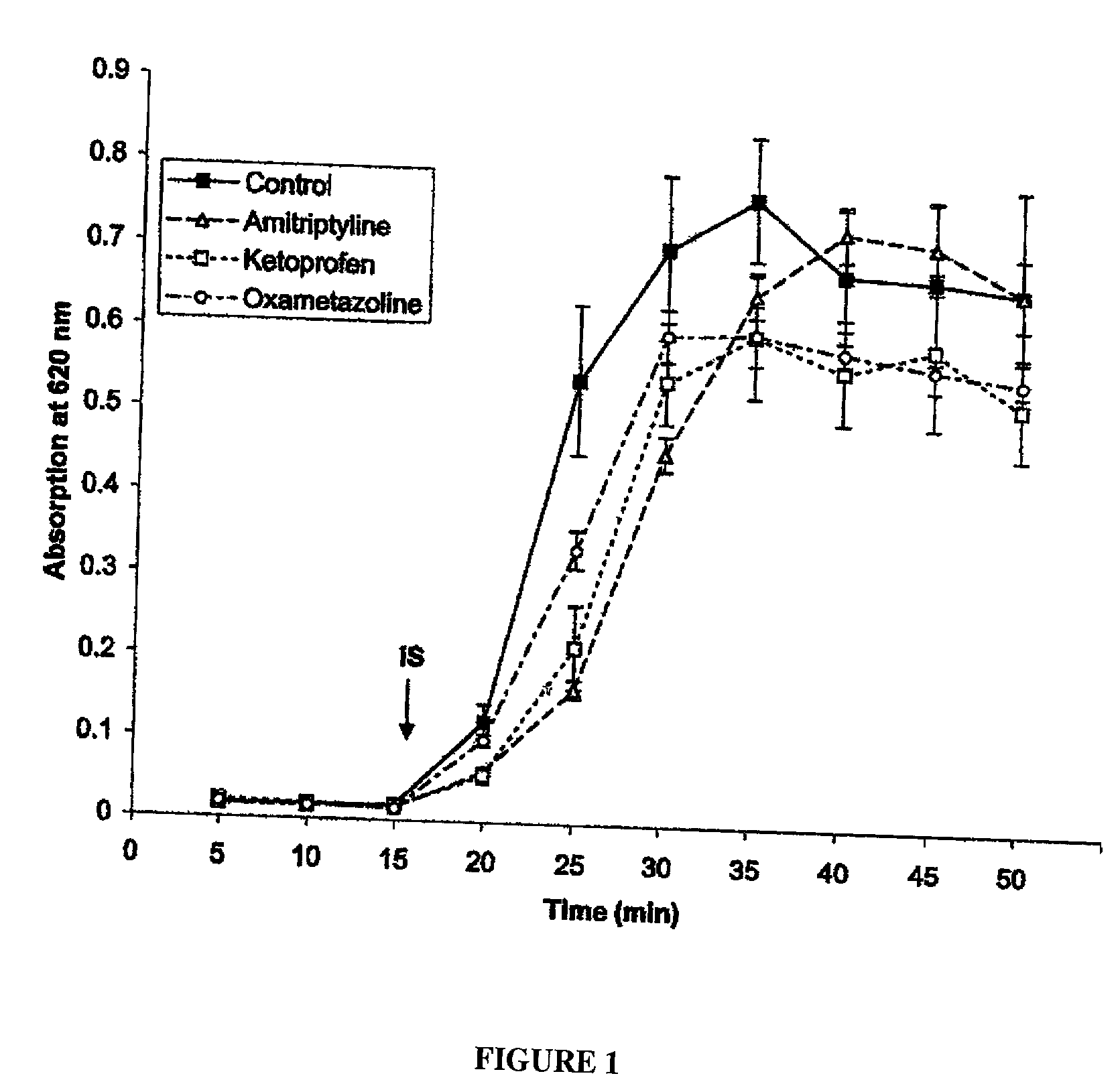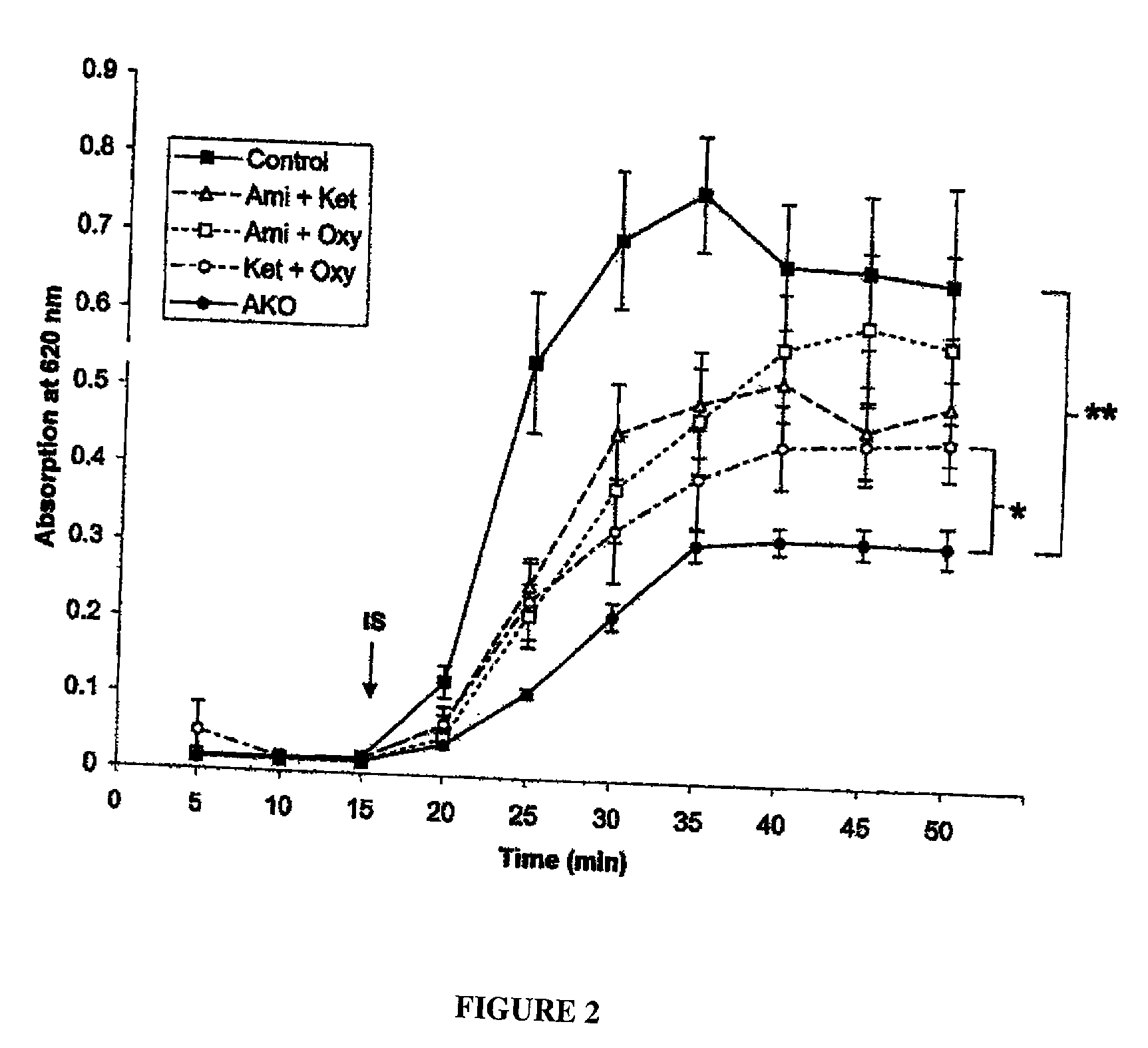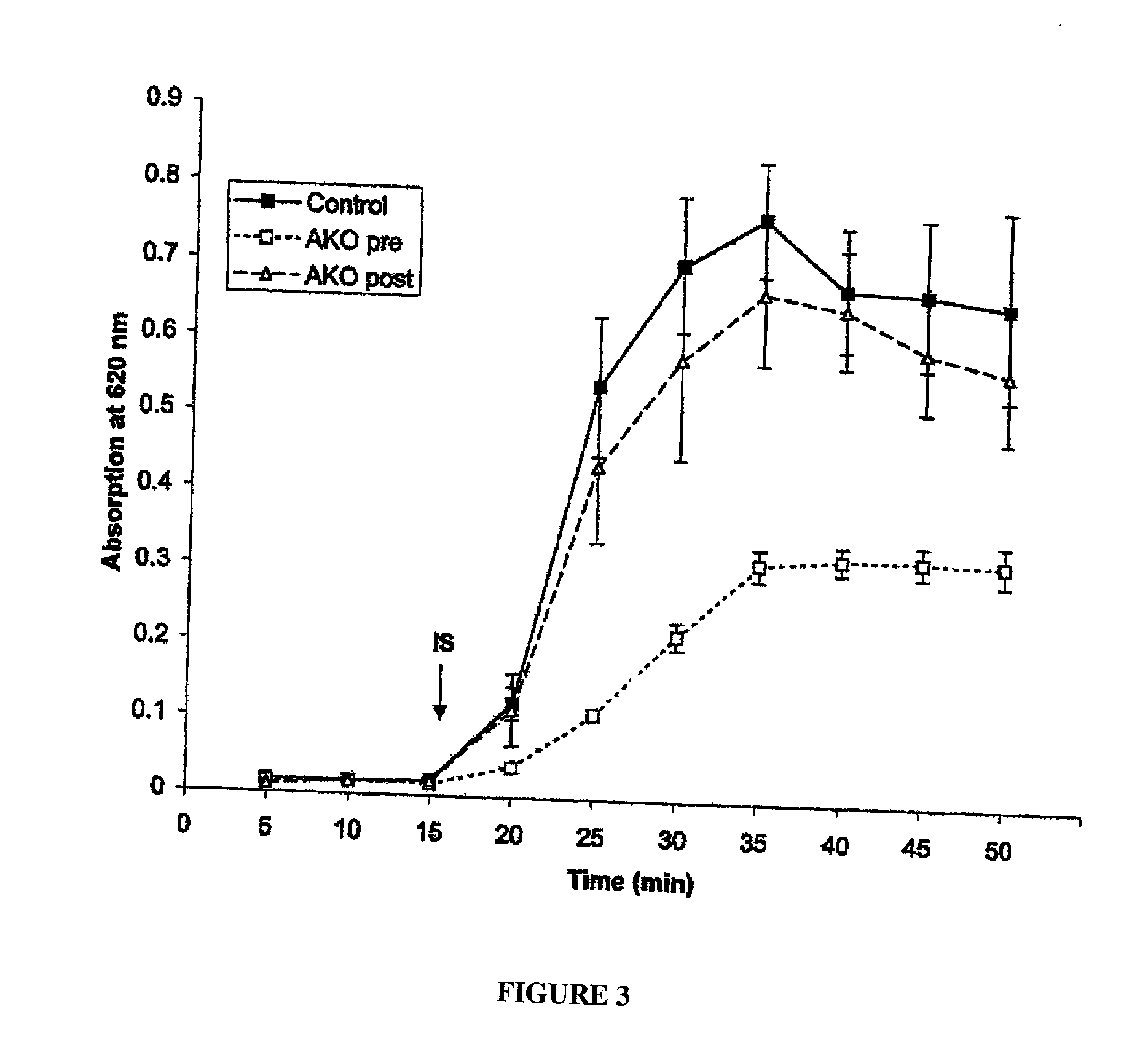Arthroscopic irrigation solution and method for peripheral vasoconstriction and inhibition of pain and inflammation
a technology of vasoconstriction and irrigation solution, which is applied in the direction of amide active ingredients, peptides, drug compositions, etc., can solve the problems of inability to develop effective dosages of pain and inflammation inhibitors at effective dosages while minimizing adverse systemic side effects, and the high incidence of nausea and vomiting related to opioids is especially problematic. , to achieve the effect of decreasing the patient's postoperative analgesi
- Summary
- Abstract
- Description
- Claims
- Application Information
AI Technical Summary
Benefits of technology
Problems solved by technology
Method used
Image
Examples
first embodiment
[0036] In a first embodiment, the adrenergic receptor agonist selected for use as the vasoconstrictor is an agonist that demonstrates interactions with at least one member of the alpha receptor subfamily and that may also interact with members of the beta receptor subfamily, and thus may be either an agonist that is non-selective for activity at alpha adrenergic receptors relative to beta adrenergic receptors (a "mixed alpha and beta agonist") or may be selective for activity at alpha adrenergic receptors relative to beta adrenergic receptors.
[0037] In a preferred embodiment, the alpha adrenergic receptor agonist selected for use as the vasoconstrictor is an agonist that is primarily selective for direct agonist activity at alpha receptors, and that has relatively minor interaction with beta adrenergic receptors (also referred to herein as "beta receptors" or ".beta. receptors").
[0038] Agonists that are primarily selective for direct agonist activity at alpha receptors and that have...
example i
A. Example I
[0207] The following composition is suitable for use in anatomic joint irrigation during arthroscopic procedures. Each drug is solubilized in a carrier fluid containing physiologic electrolytes, such as normal saline or lactated Ringer's solution, as are the remaining solutions described in subsequent examples.
24TABLE 24 Irrigation Solution for Arthroscopy Concentration Most (Nanomolar): Pre-Class of Agent Drug Therapeutic Preferred ferred serotonin.sub.2 ami-100-50,000 1,000-25,000 5,000 antagonist and triptyline histamine.sub.1 antagonist cyclooxygenase ketoprofen 1,000-500,000 5,000-100,000 18,000 inhibitor mixed alpha-1 / oxy- 0.01-25,000 0.05-15,000 5,000 alpha-2 metazoline agonist (vasoconstrictor)
example ii
B. Example II
Alternate Irrigation Solution for Arthroscopy
[0208] The following composition is also suitable for use in anatomic joint irrigation during arthroscopic procedures.
25TABLE 25 Concentration (Nanomolar): Most Class of Agent Drug Therapeutic Preferred Preferred mixed alpha-1 / napha- 0.1-250,000 1- 5,000 alpha-2 agonist zoline 25,000 (vasoconstrictor) serotonin.sub.2 ami- 100-50,000 1,000- 5,000 antagonist and triptyline 25,000 histamine.sub.1 antagonist cyclooxygenase keto-1,000-500,000 5,000- 20,000 inhibitor profen 100,000
PUM
| Property | Measurement | Unit |
|---|---|---|
| concentrations | aaaaa | aaaaa |
| concentrations | aaaaa | aaaaa |
| concentration | aaaaa | aaaaa |
Abstract
Description
Claims
Application Information
 Login to View More
Login to View More - R&D
- Intellectual Property
- Life Sciences
- Materials
- Tech Scout
- Unparalleled Data Quality
- Higher Quality Content
- 60% Fewer Hallucinations
Browse by: Latest US Patents, China's latest patents, Technical Efficacy Thesaurus, Application Domain, Technology Topic, Popular Technical Reports.
© 2025 PatSnap. All rights reserved.Legal|Privacy policy|Modern Slavery Act Transparency Statement|Sitemap|About US| Contact US: help@patsnap.com



